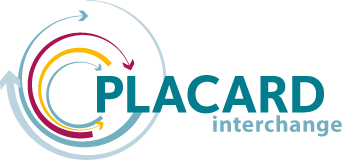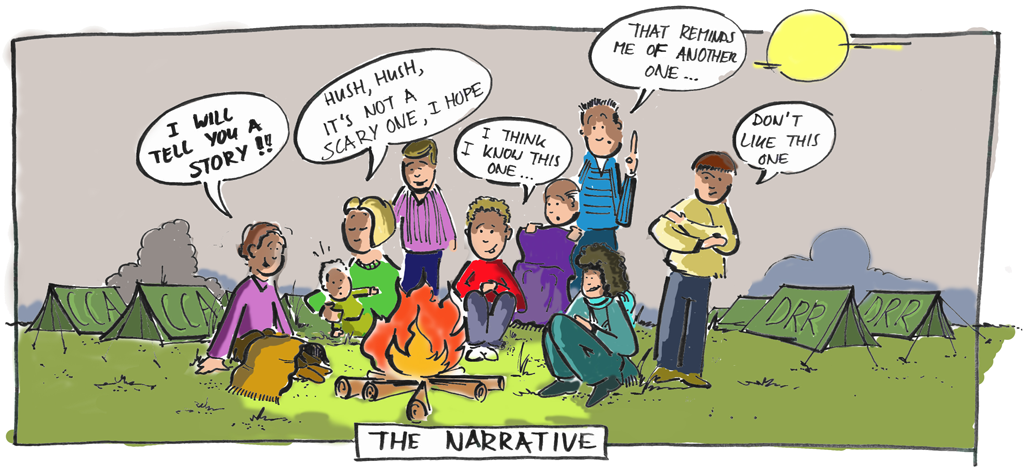25 October, 2017
During our workshop, we explored storytelling and how to create our own inspiring narratives.
Five steps for successful story telling
- Tell a beautiful story – nonfiction can be literature!
- Passion drives a reader’s interest
- Focus on central ideas and themes
- Brevity is vital – make it short
- Luck
We need to change the dialogue from one of catastrophe to a focus on what we CAN do. People begin to normalise extreme events when they’re faced with negative story after negative story. Climate change books are not bestsellers, self-help books and fiction are what people actually read – we need to create more positive, proactive stories of action to engage the public.
There are many stories about climate change. All of these are needed to connect to the many different people we want to get the message to. We must allow people to share their stories too –their experiences and how they have addressed issues…
What is a narrative?
Narratives are stories that make sense. They do not replicate an experience, but filter it to create a story with a purpose in mind. Find out more about:
Ingredients of successful narratives
- Empathy – draw on issues that your target audience is concerned about.
- Connection – build on past or common experiences. A feeling of connection between the narrator and audience can increase the narrative’s effectiveness.
- Listen – ask for solutions, co-create responses. Be flexible in adapting your narrative.
- Focus points – have a few key points running through the whole narrative, and keep the conversation coming back to them.
- Share lessons learned and good practice.
- Speak to people’s perceptions – for example, ‘luck’, ‘fate’.
- Framing – begin by talking about how the particular issue affects the positive picture, then provide solutions
- Inclusivity & ownership – emphasise that the audience can be an agent of change, and that they are needed.
- Core values – understand your audience’s values and incorporate them, for example, ‘protect family’, ‘attract investment’. It can be helpful to present shared values to build a relationship or legitimacy with the audience, for example, in city planning you could say: “I have grown up here and love X about the city…” which instantly provides a connection to audience and encourages them to listen more.
- Explain what the new risks are for the particular situation, and how past strategies may no longer be robust enough to protect citizens. Use illustrative examples to demonstrate how to take action, an example of how others have addressed these issues.
- Balance – your message must have good balance of security, awareness and uncertainty, for example, fire cannot be prevented but the impacts can be minimised
- Link to the audience’s own activities, for example, suggest they build on a particular existing project or task.
- Terminology must be used carefully – for example, it isn’t possible to ‘prevent’ wildfires. Don’t use jargon, and explain any technical terms. It is also important to use appropriate terminology for your audience – for example, ‘strategy’ and ‘regeneration’ for city planners.
Framing
Stories are powerful framing devices – they select and name different features and relationships that become the subject of the story, what it is about.
For example, two different ways of framing urban housing could be:
Slums are areas of disease that must be cured
or
Slums are areas supporting highly social and collaborative communities.
Different ways to frame water provision for agriculture could be:
Insufficient water supply
or
Excessive water demand.
Framing is discursive. For example, refugees or illegal immigrants, awareness raising or fear mongering, freedom fighters or terrorists, competitive remuneration or exorbitant bonus, climate change adaptation or business-as-usual, disaster relief workers or the aid industry.
Framing is strategic. For example, politicians have story to stick to in spite of tenacious journalists!
Framing is interactional. For example, the manipulation of surveys through a sequence of questions which forces a particular response as a logical conclusion. This is why it is so difficult to frame questions objectively.
Issue framing as a three-step process:
- Person A describes their framing
- Person B describes their (opposing) framing, as a result frame differences emerge
- Frame interaction strategies:
- frame incorporation –some change is needed
- frame accommodation – both arguments are important
- frame disconnection – the argument is not important for this issue
- frame polarisation – reasserting your own frame again in stronger way
- frame exploration – keeps both frames on table, explores how they relate to each other
- frame reconnection – finding a way forward while maintaining both frames.
Technically, a glass is always full – half air, half water!
Narratives cookbook
Tips to help you and your stakeholders create engaging narratives.
Our recipe book is now available to download – How to become a resilience chef – narratives cookbook (pdf, 6 MB).
Who
- Identify your target audience
- Consider who will disseminate the final narrative – someone respected and familiar to the audience
- Make sure you are credible and trusted yourself
- View the narrative through other people’s eyes – will they share your interpretation?
- Be sensitive to your audience’s values when selecting terminology, metaphors or stories
- Be sensitive to cultural differences and norms when developing storylines.
What
- Your storyline must resonate with the audience and grab their attention
- Visuals should be used carefully as they can be distracting. Someone looking directly at you is more compelling (potentially!)
- Build a background and context around your story in a logical order
- To create a narrative that different audiences can connect with, be selective – make fewer, clear points. Don’t try to add context to connect to multiple groups as that will diffuse your point and lose your audience’s attention.
- Use data that is appropriate for your audience. Hard data is useful to make a compelling case for technical people, but might be overwhelming for other audiences. However, don’t dumb down the content of your narrative, it’s important to be able to back up your story with data or evidence.
- It’s possible to backup emotional content of a narrative with data, but it doesn’t necessarily work the other way around.
- The specifics of a narrative depend on context and reach: creating a single narrative for a small, specific group may not be best option if want to reach a larger audience. However, you may be able to use a particular narrative to reach a certain group and motivate them to be ambassadors for the message as part of a broader outreach strategy.
How
- Listen and look at you audience’s body language; respond with empathy
- Be flexible in adapting your narrative, but stay focused on the strategic point of the story
- Make it personal to you – share your emotions, passions, drivers…
Other lessons
- Your narrative may have multiple interpretations – so that different actors can make use of the story themselves
- If the target audience includes a large variety in values, perceptions and discourses, opt for a sense-making process
- Co-creation is an important principle
- Participatory design
- Consider different framing strategies



